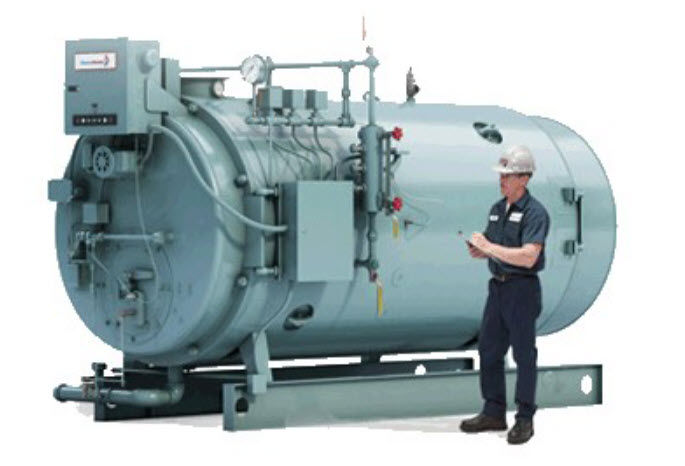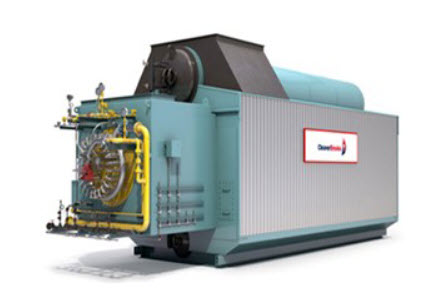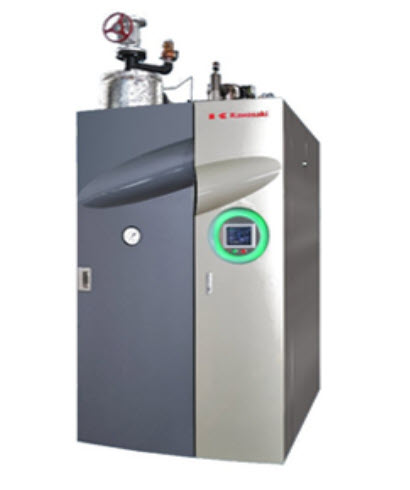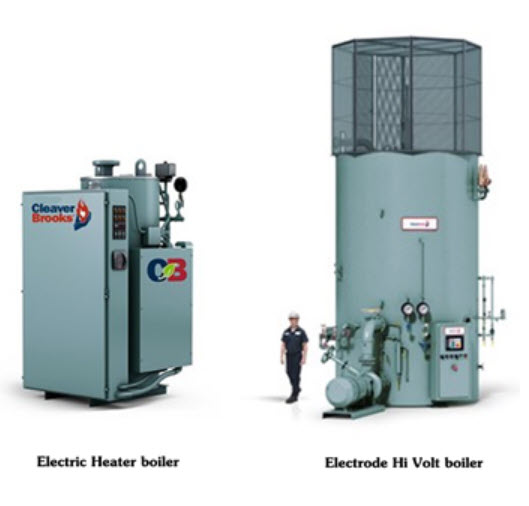Getting to Know Boilers: Steam Boilers for Business and Industrial Applications
A Steam Boiler is a machine that transfers heat to the water inside the boiler, converting it into steam. Most industries produce only saturated steam, which is then delivered through pipes to machinery for heating processes or for use in manufacturing various products.
The use of saturated steam in heat transfer maintains a constant temperature along the length of the machinery, ensuring consistent product quality and reducing the risk of product defects compared to using electric heaters, which often experience temperature fluctuations. Furthermore, purchasing large amounts of electricity can be significantly more expensive than using fuel to generate steam.
Therefore, steam boilers are widely used in hospitals, hotels, and various industrial plants. Boilers are designed in different types and models to suit specific applications, production conditions, and the type of fuel used for steam generation.
Types and Working Principles of Steam Boilers
1. Fire Tube Boiler

This type of steam boiler has a simple structure and is widely used around the world. The heat generated from fuel combustion in the furnace is transferred into multiple steel tubes, called fire tubes, which run along the length of the boiler. The surrounding water is heated to boiling point, turning into steam.
This type of boiler is commonly used in hospitals, hotels, paper mills, food factories, canned fruit factories, beverage plants, plastic factories, cosmetic factories, electronics plants, and textile dyeing and finishing industries, among others.
Advantages of Fire-Tube Boilers
-
Simple design
-
Large water capacity, resulting in stable steam pressure and consistent temperature according to steam pressure
-
Do not require extremely high-quality feed water; the boiler is less likely to be damaged in case of minor water quality control issues
-
Available in capacities of 0.1 – 30 tons of steam per hour with a pressure range of 10 – 20 bar
Disadvantages of Fire-Tube Boilers
-
Slow steam generation, taking approximately 20–30 minutes
-
Heavier in weight compared to other types of boilers of the same capacity
-
In case of an explosion, the danger is greater due to the larger volume of stored water
-
Cannot produce superheated steam
2. Water Tube Boiler

A Water Tube Boiler consists of numerous water tubes with water flowing inside them and connected to a drum. Combustion gases heat the water from outside the tubes, generating steam. This type of boiler can be arranged with multiple rows of water tubes to increase the heat transfer area, allowing the boiler to be scaled up in size to produce a large volume of steam.
Advantages of Water-Tube Boilers
-
Can be designed to generate very high-pressure steam, as the pressure-bearing structure of the water tubes and drum has a smaller diameter compared to fire-tube boilers, making it suitable for processes that require extremely high pressure or temperature
-
Capable of producing superheated steam
-
Larger in size compared to other types of boilers
-
Available in capacities of 5 – 200 tons of steam per hour with a pressure range of 18 – 250 bar
Disadvantages of Water-Tube Boilers
-
Require very high-quality water, which means a highly efficient and complex water treatment system is necessary
-
The boiler may become damaged if water quality control fails
-
When steam load changes, the steam pressure and temperature fluctuate significantly
-
Due to the small steam storage space, water carryover into the steam can occur if there is a sudden change in steam demand
-
Complex structure, making repairs difficult and time-consuming
3. Once Through Boiler

Once Through Boiler is a vertical water-tube boiler with multiple water tubes arranged in a circular pattern, resembling a birdcage. The water level fills only part of the tubes, not completely submerging them. As a result, the steam in the upper section of the tubes receives additional heat, turning into superheated steam with higher dryness. The feedwater from the pump flows upward through the long water tubes in a single pass, with no recirculation of water inside the tubes.
Advantages of Once-Through Boilers
-
Compact size and lighter weight, requiring less installation space
-
Very high efficiency, as they are equipped with a large economizer for preheating feedwater
-
Available in capacities of 0.5 – 6 tons of steam per hour with a pressure range of 9.8 – 32 bar
Disadvantages of Once-Through Boilers
-
Cannot tolerate even thin layers of scale; require extremely high-quality water and an excellent water treatment system. The boiler may be damaged immediately if water quality control fails.
-
Require large amounts of chemicals and continuous blowdown.
-
Steam pressure and temperature fluctuate very rapidly.
-
Shorter boiler lifespan due to metal stress caused by frequent and rapid pressure changes.
-
Not recommended for use with heavy fuel oil, as ignition is often difficult.
4. Electric Boiler
Electric Boilers use electricity as the energy source to generate steam. They are classified into two types:
-
Low-voltage heater element boilers (220 – 600 V): Use heating elements to generate heat.
-
High-voltage electrode boilers (4 – 25 kV): Utilize water as electrical resistance to generate heat and produce steam.

Advantages of Electric Boilers
-
Clean operation, as no fuel combustion is required
-
No need for a chimney
-
Heater element type: Available in capacities of 0.02 – 3 tons of steam per hour with a pressure range of 10 – 17 bar
-
Electrode type: Available in capacities of 1.5 – 150 tons of steam per hour with a pressure range of 10 – 31 bar
Disadvantages of Electric Boilers
-
Electricity costs are higher compared to combustion fuels
-
Heater elements may swell or rupture if scale forms or corrosion occurs from oxygen pitting, as the element’s metal surface is thin
-
Heater elements are expensive
Boonyium & Sahai Co., Ltd., a leader in industrial boilers and burners, is an authorized distributor of Cleaver Brooks steam generators, Fulton steam generators, Kawasaki steam generators, A.O. Smith water heaters, Maxon industrial burners, Oilon industrial burners, and Tandex boiler chemicals for boiler maintenance and water treatment. The company also provides comprehensive pre-sales and after-sales services, supported by a team of highly experienced experts.



 English
English Thailand
Thailand



